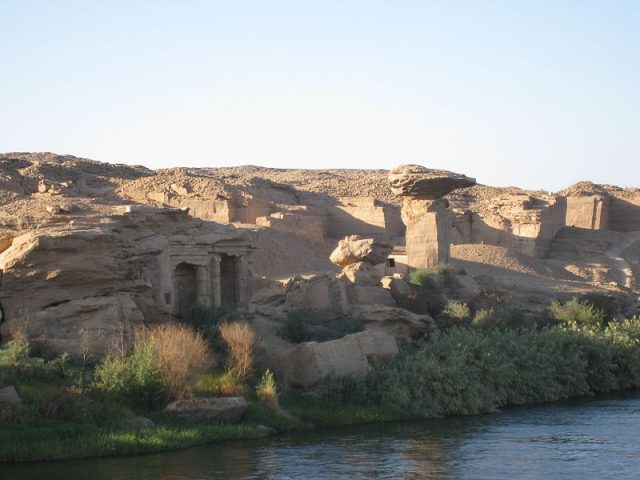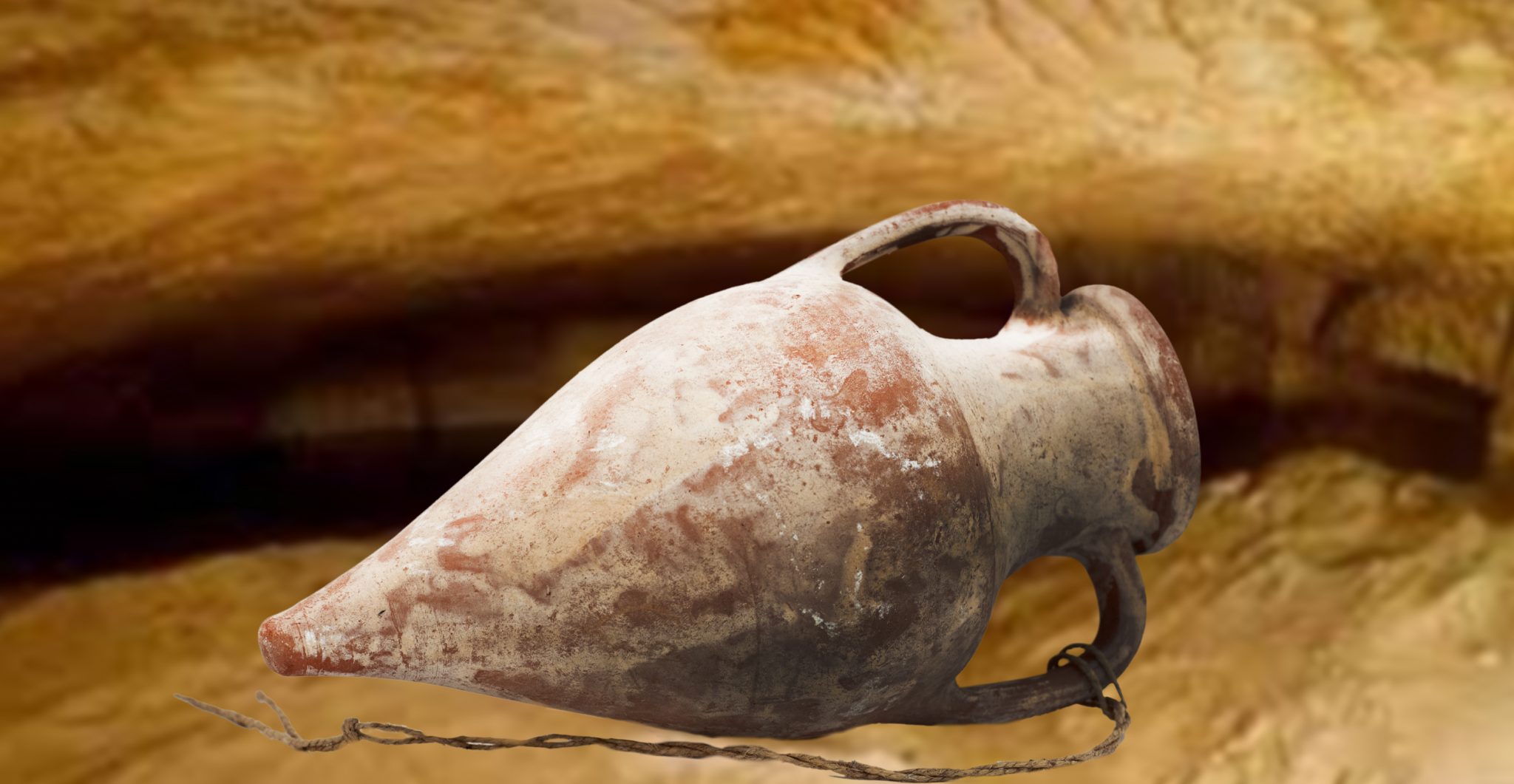What happens when an Egyptian tomb is flooded with water…or the remains of its ancient citizens? Noted Egyptologists invited a famous TV presenter to find out, with extraordinary results.
The rocky location is Gebel el-Silsila – also called the “Chain of Mountains” – which lies 40 miles north of the city of Aswan in upper Egypt. There, experts Maria Nilsson and John Ward have been going underground in an area that used to be a hive of industry.
Over 3,000 years ago, quarries were hewn by the Nile. The multitude of workers who performed this mighty task are said to have been buried at Gebel el-Silsila.
Presenter and comedian Tony Robinson traveled to meet Nilsson and Ward for a recent documentary, Egyptian Tomb Hunting (broadcast on Channel 5 in the UK). The husband and wife team had been busy pumping out water from a man-made pit with a depth of 20 m. Robinson and the team then embarked on an Indiana Jones-style descent via abseil to see what the wet stuff revealed.
Flooded Egyptian tomb stuns archaeologists as they drain it to find “human soup” burial chamber https://t.co/xgF224rQpX
— The Sun Tech (@TheSunTech) October 16, 2019
They were faced with an opening through which the water flowed. “They then crawled through thick mud,” writes The Sun, where they found themselves in “a large burial chamber in which they found what Robinson described as ‘human soup’.” In the program the explorers exclaimed that there were about 50-60 ancient citizens mixed in the muddy water they were wading through.
While not having much space to crawl around in, Robinson and Ward discovered long-forgotten Egyptian treasure in the layers of muck. To Robinson’s astonishment he found a large piece of pottery in the corner. Scraping away the mud, it was estimated to be approx. 2 ft tall, and presumably an “amphora” or holding vessel.
Quoted from the documentary, Ward remarked that it would have contained “some kind of food substance that was buried with the deceased.” Robinson commented, “In all my years of finding pottery, I’ve never found anything like this, it’s like a huge whale.”
Egypt archaeologists stunned after draining flooded tomb: ‘Never found anything like it’ https://t.co/dfugO7iBZt
— 🦃 The Anomalist 🥧 (@anomalistnews) October 17, 2019
A second opening was also visible, indicating the presence of remains deeper beneath the water. According to Ward, these could easily run into the hundreds.
Nilsson and Ward have been active at Gebel el-Silsila for some time. In December last year, Live Science reported on another of their dramatic excavations. The experts had uncovered a flooded mass burial chamber.

“The two chambers are filled with briny water from a naturally occurring spring,” the article says, adding “the remains inside are jumbled. To excavate the tomb, archaeologists must run pumps to remove enough water so they can sit and gently hand-sift the mud for bones and artifacts.”
The flooded Egyptian tomb took them a couple of years to work through. Much effort goes into simply extracting the water in the first place.
Back to the present and the quarryman’s tomb dates back to the Eighteenth Dynasty, which heralded the New Kingdom of Egypt. This period, lasting between the 16th and 11th centuries B.C., had an enormous impact. Regarded as the pinnacle of Ancient Egyptian power, its notable rulers included Tutankhamun, Hatshepsut – one of 2 female pharaohs – and Akhenaten, husband of the legendary Queen Nefertiti.
The Eighteenth Dynasty shaped much of what we know about life in the time of the pyramids, from King Tut’s tomb to its powerful women. In 2009, History.com noted that “During the rule of Akhenaton, his wife Nefertiti played an important political and religious role in the monotheistic cult of the sun god Aton.”
She became far more than just a figurehead. “Images and sculptures of Nefertiti depict her famous beauty and role as a living goddess of fertility,” the site wrote. The Ancient Egyptians treated death as almost a stage of life, with the body entombed alongside everything it would need for its journey to the next world.
Related Article: Did Booby Traps Really Exist in Ancient Egyptian Tombs?
For such a lavish culture to be consumed by dirty water is a shame, but a sign that no matter how much of a mark someone makes on history, eventually it’s nature that has the final say.
